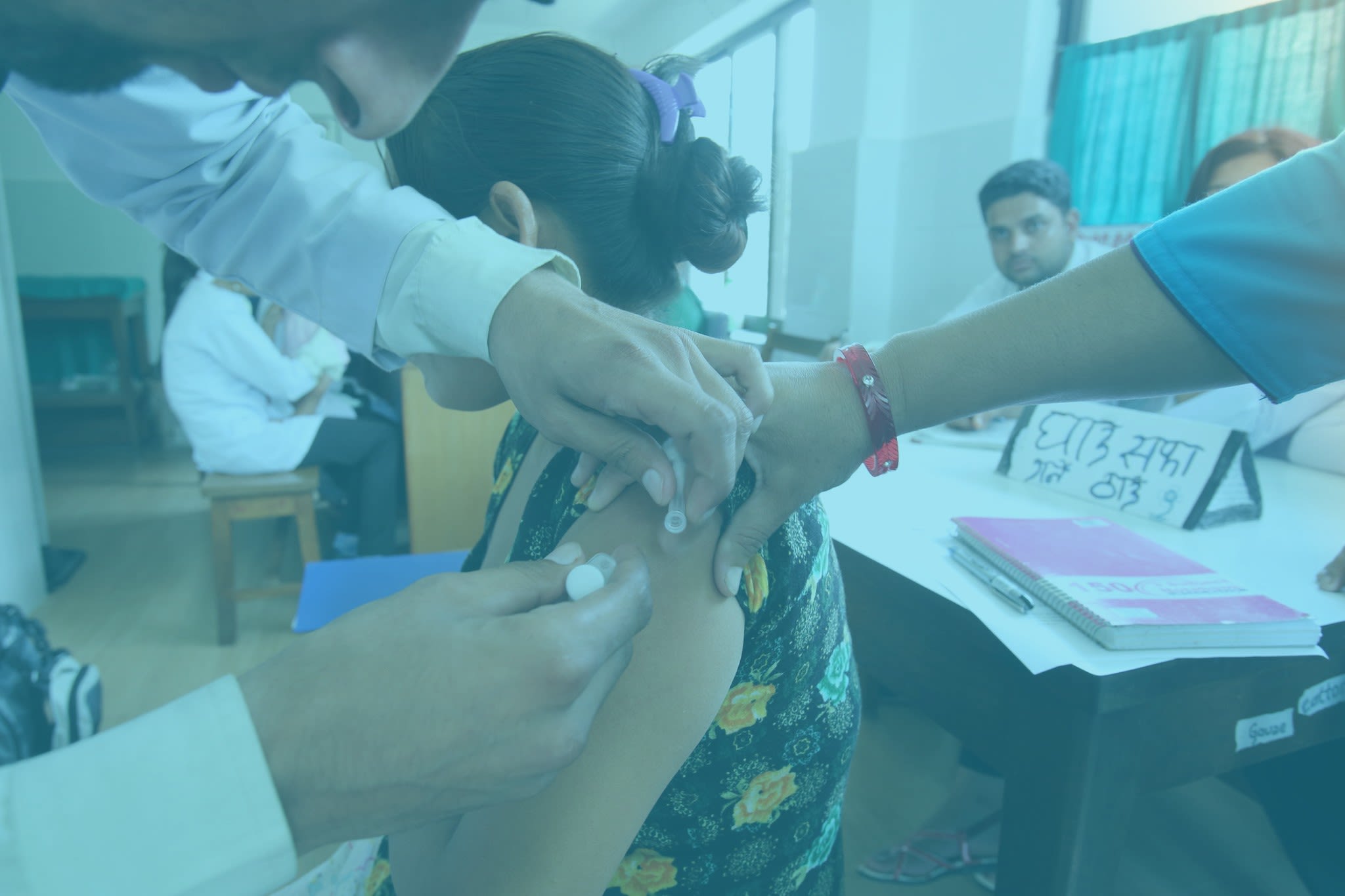Building up a social protection system in Somalia and Somaliland
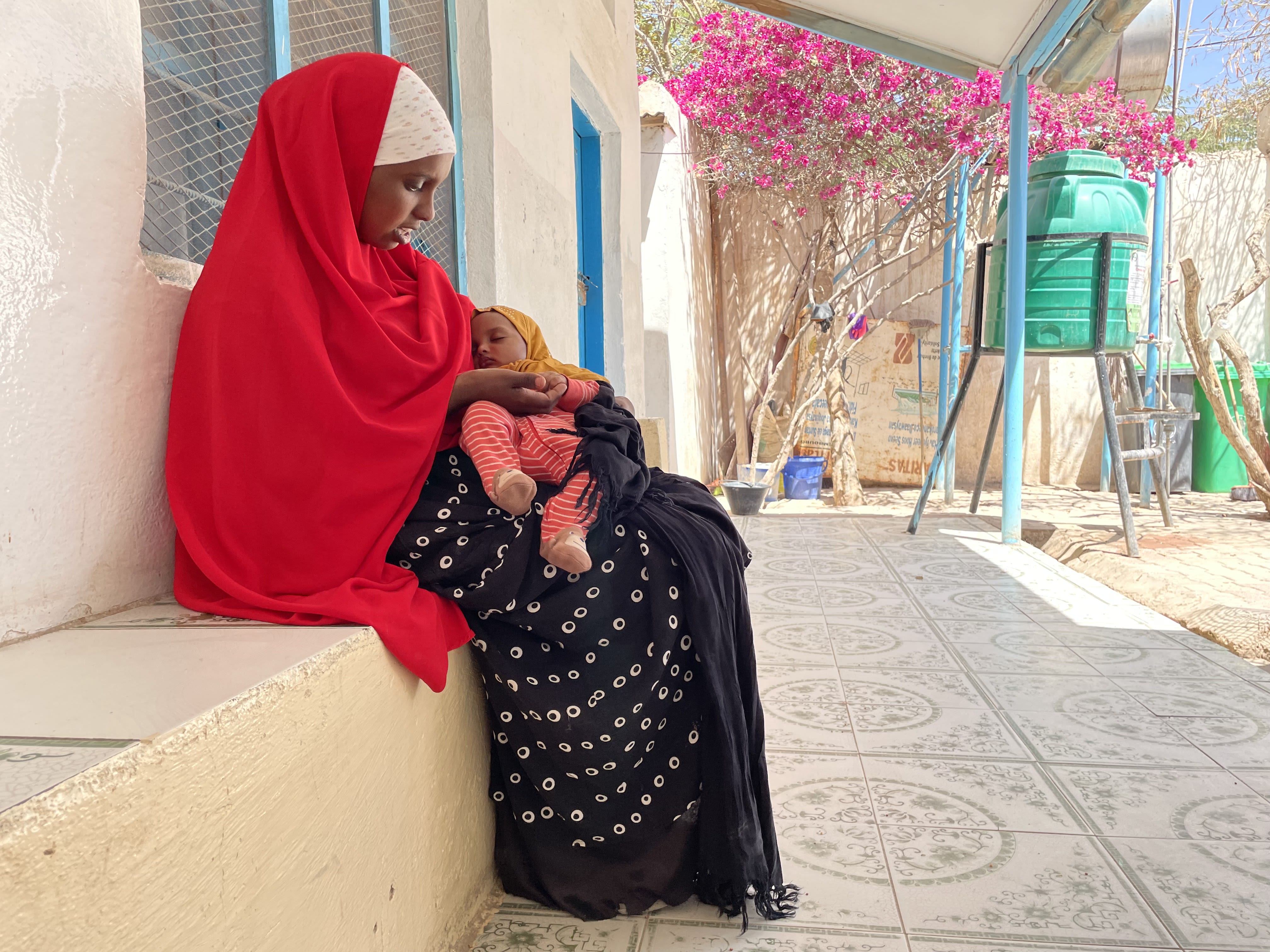
HARGEISA, Somaliland — It was midmorning two years ago when Khadan Yusuf went into labor. It all happened so quickly. She fainted and about a half-hour later woke up to the sound of her son crying. The birth happened at home.
“It was his first cry — and also his last,” she said. The baby cried for five minutes and fell silent.
She was taken to a private hospital, at the cost of about $200, to save her own life. She was told she has high blood pressure. She hadn’t been to a health clinic during her pregnancy.
“He belonged to Allah, and he returned to Allah,” she said, recalling the tragic morning. This was her second child to die shortly after birth.
After his death, Yusuf committed herself to attending regular health clinic visits. She became pregnant last year and attended all her visits. In January, she delivered a healthy daughter.
“For her,” she said, cradling the baby swaddled in scarves in her arms, “I hope she lives a long, healthy life — and when old age comes for me, I hope she takes care of me.”
In her final trimester, Yusuf was enrolled in a program to receive $20 through mobile money cash transfers each month. The payments last two years. She has used the money to pay her water bill, as well as to buy food, diapers, and powdered milk for her other children. She is unemployed, and her husband is a taxi driver.
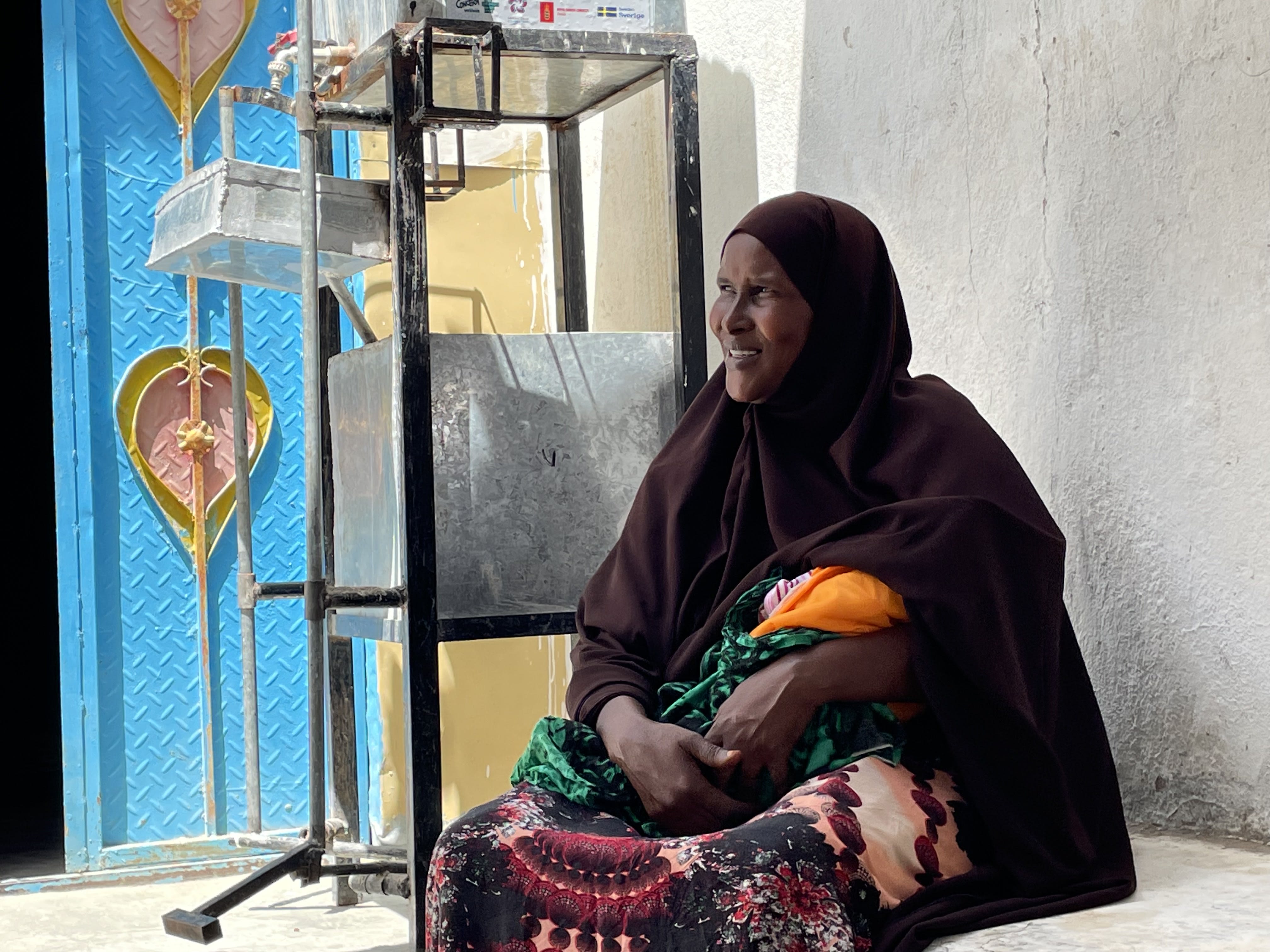
Khadan Yusuf and her daughter at a health clinic in Hargeisa.
Khadan Yusuf and her daughter at a health clinic in Hargeisa.
The cash is provided by the Somali Cash Consortium, a coalition of NGOs including Concern Worldwide, the Norwegian Refugee Council, Save the Children, and the Danish Refugee Council, with funding from the European Union delegation to Somalia, and Swedish and Danish Embassies. The consortium has registered over 20,000 pregnant people across Somalia and Somaliland. It works in coordination with the governments of Somalia and Somaliland — the latter unilaterally declared independence from Somalia.
The consortium hopes its cash programs can help others avoid the pain Yusuf experienced, by encouraging pregnant people to visit health clinics, among other healthy behaviors.
“The $20 can be used by the beneficiary in the way they feel is essential to them. They know what the priorities are in their house. … These are their choices to make, not ours.”
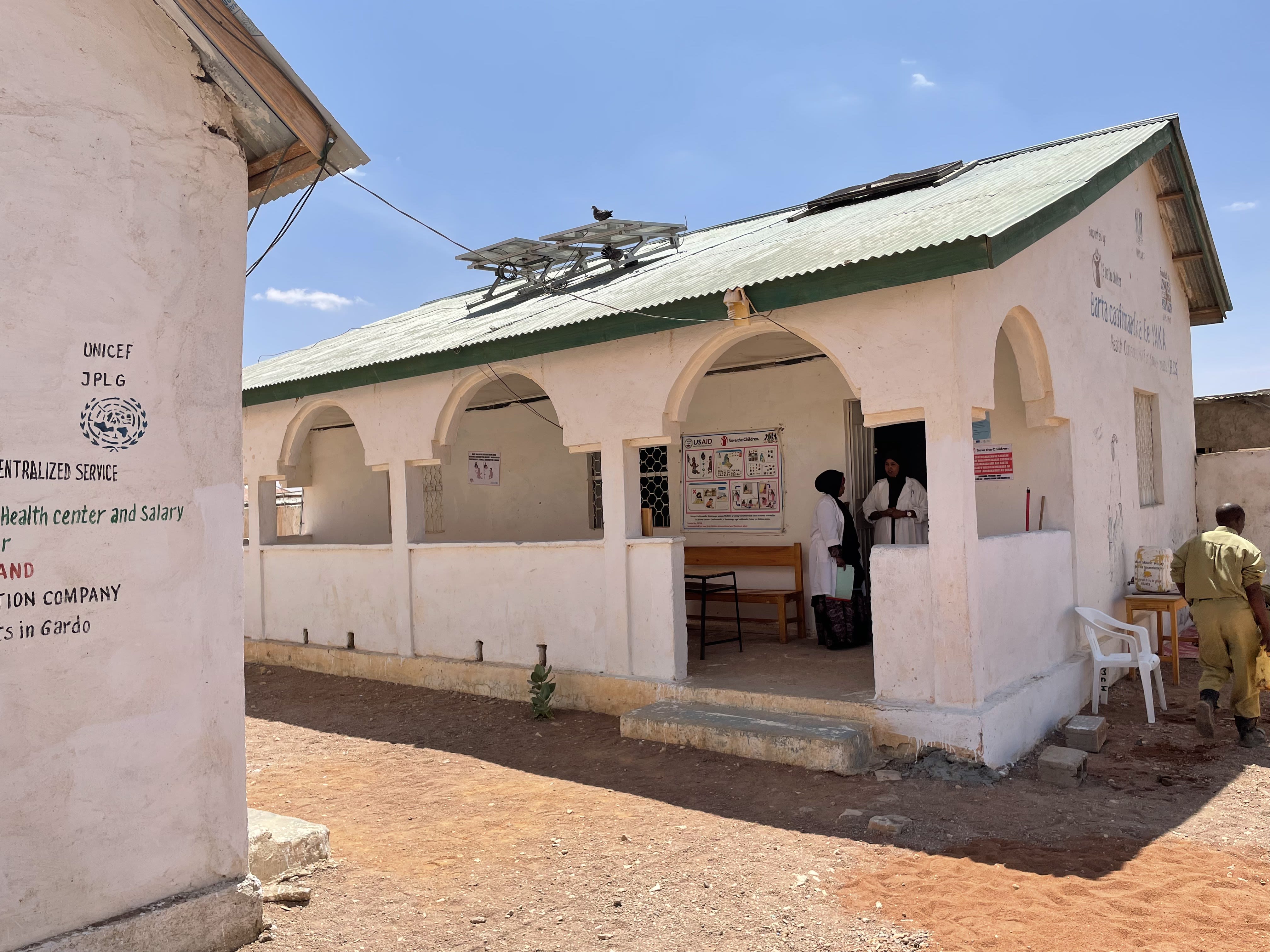

Healthy habits
Many women have heartbreaking stories to tell about losing children. Twenty-eight-year-old Ayan Hirse Elmi has already lost four children — from diarrhea, measles, pneumonia, and during delivery. She is now a regular visitor at the health clinic and is enrolled in the cash program. She is nine months pregnant and uses the money to buy flour, rice, and oil.
The consortium works with public maternal and child health clinics that serve low-income communities to identify and enroll women in their third trimester. There are neither conditions nor restrictions attached to receiving the cash: The women can buy whatever they want, and it’s not contingent upon health care visits.
But the program uses techniques to “nudge” the participants toward healthy behaviors, said Francesca Sangiorgi, program coordinator at the Somali Cash Consortium. This includes referring women into the program that are already attending the clinic, counseling sessions, and sending voice messages to their phones.
Attending the clinic is important to monitor a pregnant woman’s health, which helps health workers flag a potentially complicated delivery. Women receive multivitamins, folic acid, and iron. They are encouraged to give birth in a clinic, rather than risk an unsafe labor at home.
“Those that come in early, we refer them to a hospital for delivery. But when it’s too late, and someone comes to you at the last minute when it's already an emergency, then she can even die in transport. It's very serious in these cases,” said Faduma Hassan Hussein, a midwife working at a health clinic in the town of Qarxis in Puntland, Somalia.

Faadumo Said Shire, the nurse in charge of a maternal health clinic in Puntland, and one of her patients Ayan Hirse Elmi.
Faadumo Said Shire, the nurse in charge of a maternal health clinic in Puntland, and one of her patients Ayan Hirse Elmi.
Fadamo Yasin Abdulle, who also lives in Qarxis, had her eldest daughter’s head stuck during delivery 11 years ago. Abdulle believes this was because she had undergone a severe form of female genital mutilation, which blocked the passage of the child — and now her daughter lives with a neurological condition and paralysis. Abdulle hadn’t been to the health facility during that pregnancy where this risk could have been flagged. She began her delivery at home, but it lasted for two days, and she was taken to the hospital.
She recently had her ninth child and is a regular visitor at the health facility — she goes twice a week.
Even without making the visits conditional, anecdotally, health clinics involved in the cash program have seen an increase in attendance.
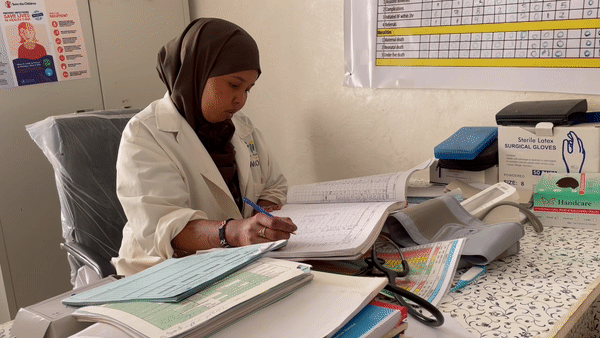
Filsan Mohammud, a nurse at a maternal health center in Yake village, Puntland.
Filsan Mohammud, a nurse at a maternal health center in Yake village, Puntland.
“The women in the program come more regularly than other mothers. It also encourages other mothers to come, because they think that one day they will be involved in the program,” said Filsan Mohammud, a nurse at a maternal health center in Puntland’s Yake village.
Iimaan Diiriye, antenatal care coordinator at a health clinic in Hargeisa, echoed this sentiment: “If the mothers don't come to the clinic, they think they might lose the chance of getting the $20.”
“Humanitarian cash focuses only on saving lives — it does not contribute to the reduction of poverty. … If communities receive cash transfers for a long period of time, it will build their resilience against future disasters.”
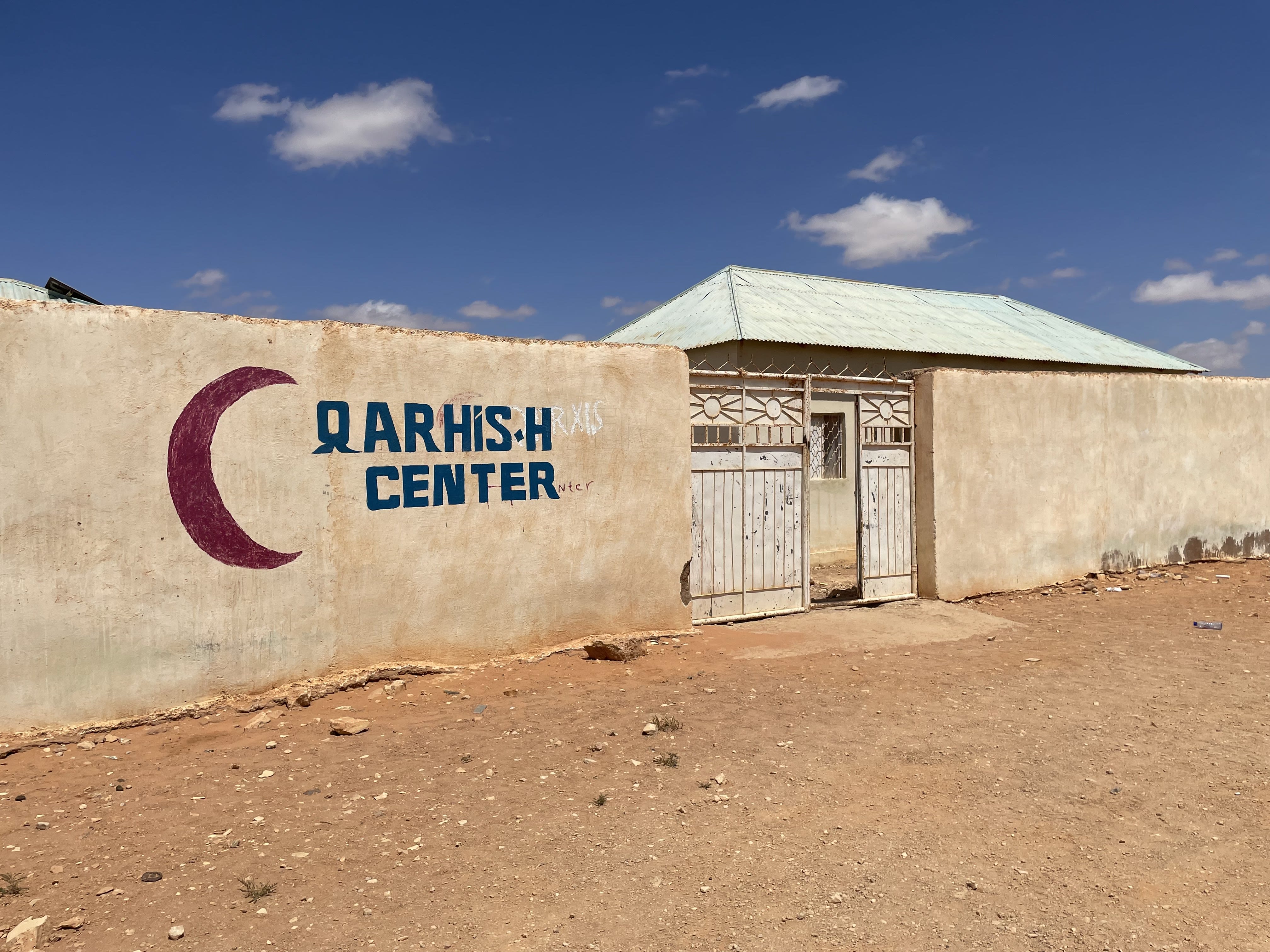
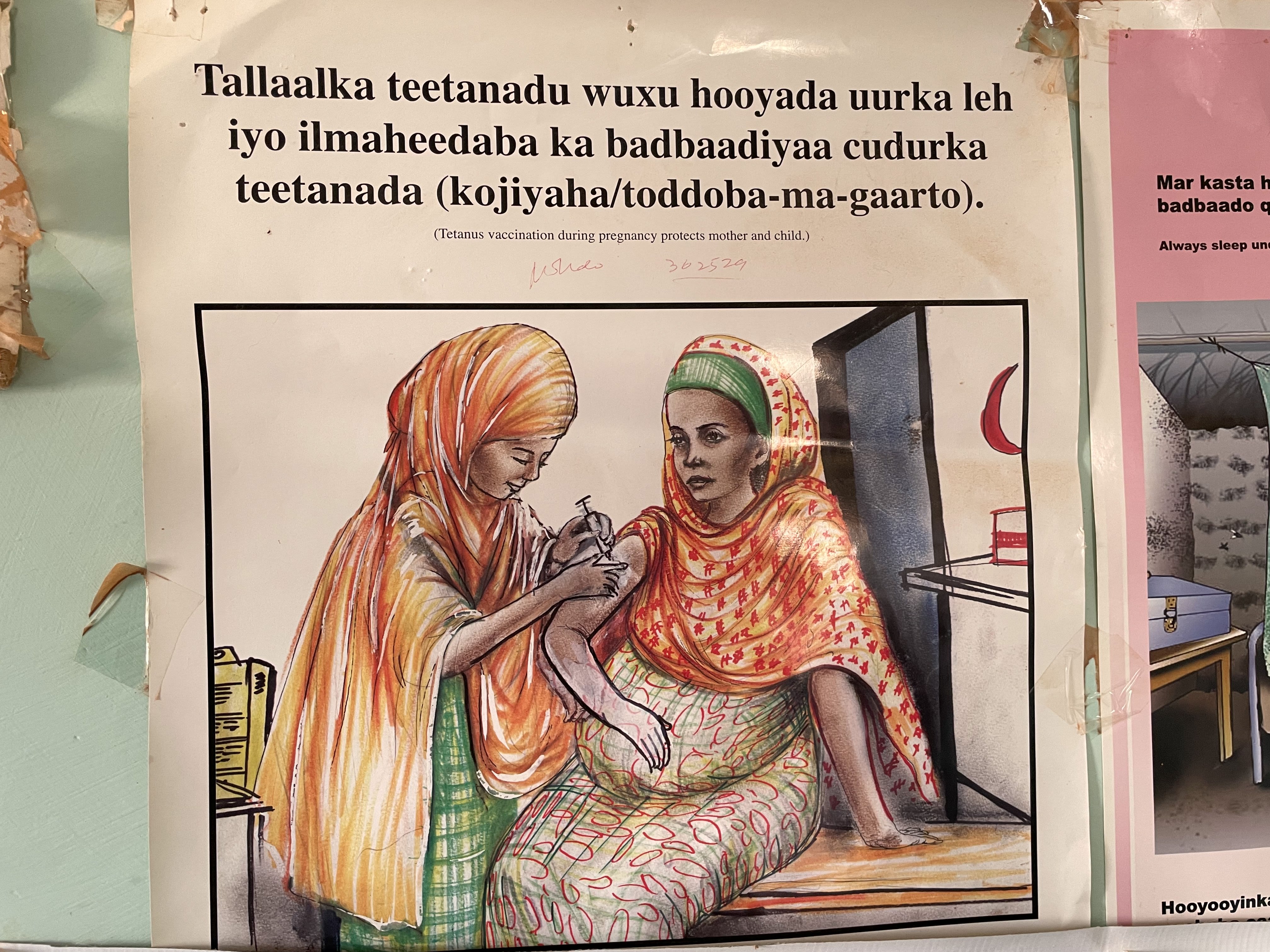

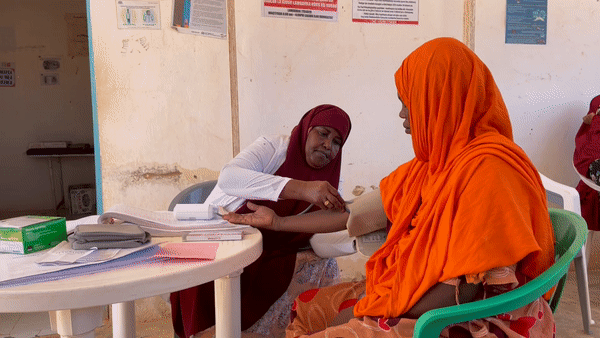

Aisha Mohammud Mohammed, a participant in the program, comes to the clinic for a checkup.
Aisha Mohammud Mohammed, a participant in the program, comes to the clinic for a checkup.

Fatima Ibrahim Ahmed, a participant in the program, visits the health clinic.
Fatima Ibrahim Ahmed, a participant in the program, visits the health clinic.
Another goal of the program is to improve the nutrition of new mothers and babies. This is done through counseling sessions, where women are taught about nutrient-dense food. They also receive prerecorded voice messages with health guidance in areas such as breastfeeding, nutrition, and reminders to attend clinic visits.
But for women living in circumstances where money is scarce, it can be hard to prioritize a nutrient-dense diet. Devex interviewed over a dozen of participants in the program and the majority in both Somalia and Somaliland said their families eat mostly plain rice and pasta.

A nutritional class for new mothers at a health clinic in Somaliland.
A nutritional class for new mothers at a health clinic in Somaliland.
The drought in the region has led to a spike in the price of nutrient-dense food such as vegetables, fruit, and meat. And some cheaper options, such as sorghum, which is high in protein, consume a lot of charcoal to cook. Charcoal costs about $14 for a 25 kilogram (55 pound) sack. The war in Ukraine is also causing the price of other foods to increase significantly — the price of a 25 kilogram bag of rice in Somalia has gone up from $15 to $22 since the beginning of the conflict.
Instead, women said they spend the money on electricity and water bills, rent, and more basic food supplies such as flour, rice, sugar, and oil.
Nimco Mohammed, who has 10 children, said that while she is currently breastfeeding her newborn, she purchases powdered milk for the other young children with the cash.
“My older children joke that when this child was born, he came with his own milk,” she said, laughing.
And that’s OK for the mothers to spend it on what they need, according to the consortium.
“The $20 can be used by the beneficiary in the way they feel is essential to them. They know what the priorities are in their house,” said Nura Ahmed Mohamed, social transfers program manager at Concern Worldwide. “These are their choices to make, not ours.”
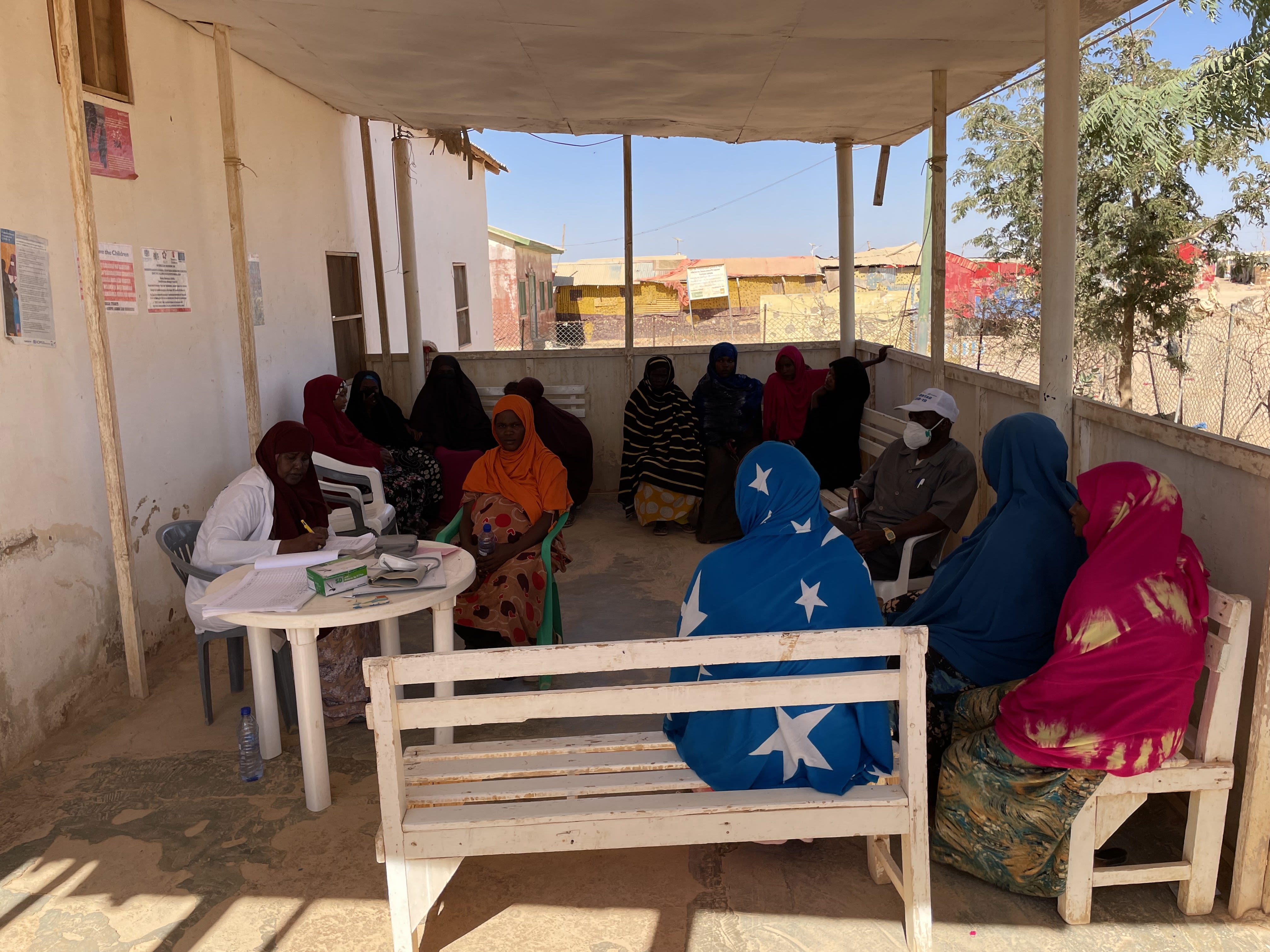

Beyond emergencies
Droughts and flooding are increasingly commonplace in the Horn of Africa — which is currently experiencing the worst drought in 40 years. Internal displacement camps in Somalia and Somaliland have swelled in recent years with many people unable to return to rural areas because their livestock died.
In response to recurring disasters, the aid sector has scaled up emergency cash transfers — but this is a short-term solution. To create longer-term resilience, the sector is working with governments in Somalia and Somaliland on distributing social protection cash transfers as part of efforts to build a broader social safety net system. Somalia passed a social protection policy in 2019, and Somaliland has also recently finalized one, which will be presented to its cabinet for approval.
“Humanitarian cash focuses only on saving lives — it does not contribute to the reduction of poverty,” said Mohamud Isse Yusuf, social protection program manager at Save the Children Somalia. “If communities receive cash transfers for a long period of time, it will build their resilience against future disasters.”

Nutritional guidance for pregnant and lactating mothers at a health clinic in Hargeisa.
Nutritional guidance for pregnant and lactating mothers at a health clinic in Hargeisa.
Neighboring countries, such as Ethiopia, Kenya, and Rwanda, already have government-administered social protection cash transfer programs.
In this pilot, beyond pregnancy and early childhood, the consortium also targets other groups of people in vulnerable points in their lives — including those in older age and unemployed youths.
“We cannot wait until we have a longer-term social protection system in place while drought and other emergencies are ravaging our people.”
Another program, the World Bank’s Baxnaano safety net program, which is implemented by the World Food Programme, provides long-term social protection cash transfers based on poverty-level targeting. It also provides $20 per month.
Research suggests there is a higher level of exclusion with poverty-level targeting as opposed to categorical targeting. Metrics used to determine poverty levels such as the number of livestock and income can be volatile and change in short periods of time, Sangiorgi said.
“In a country like Somalia, where around 70% of the population lives below the poverty line, poverty-based targeting is a debatable approach,” she said. “Categorical targeting is a better way to ensure the people who should benefit from the social transfer program are part of it, and exclusion errors are reduced.”
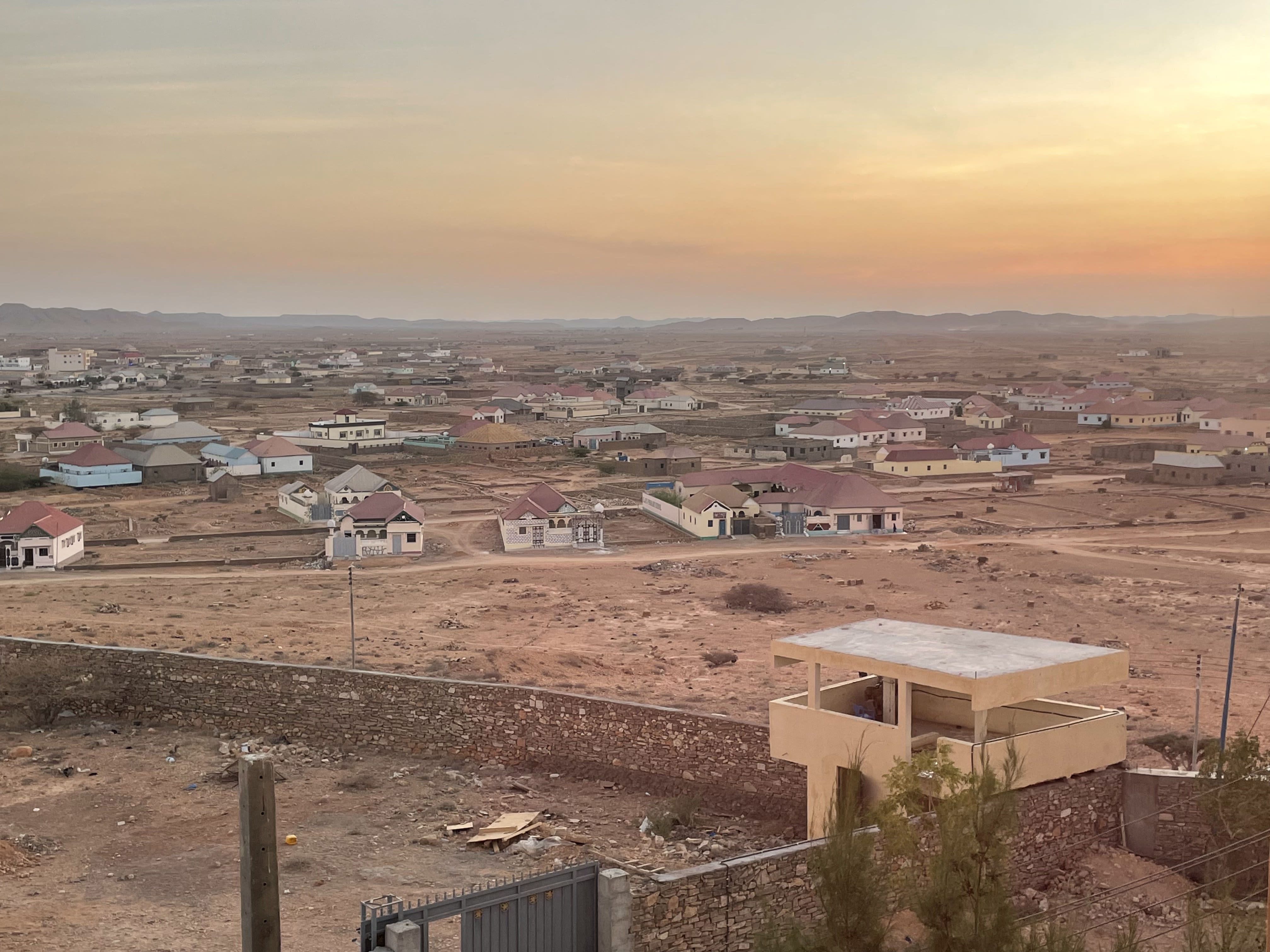


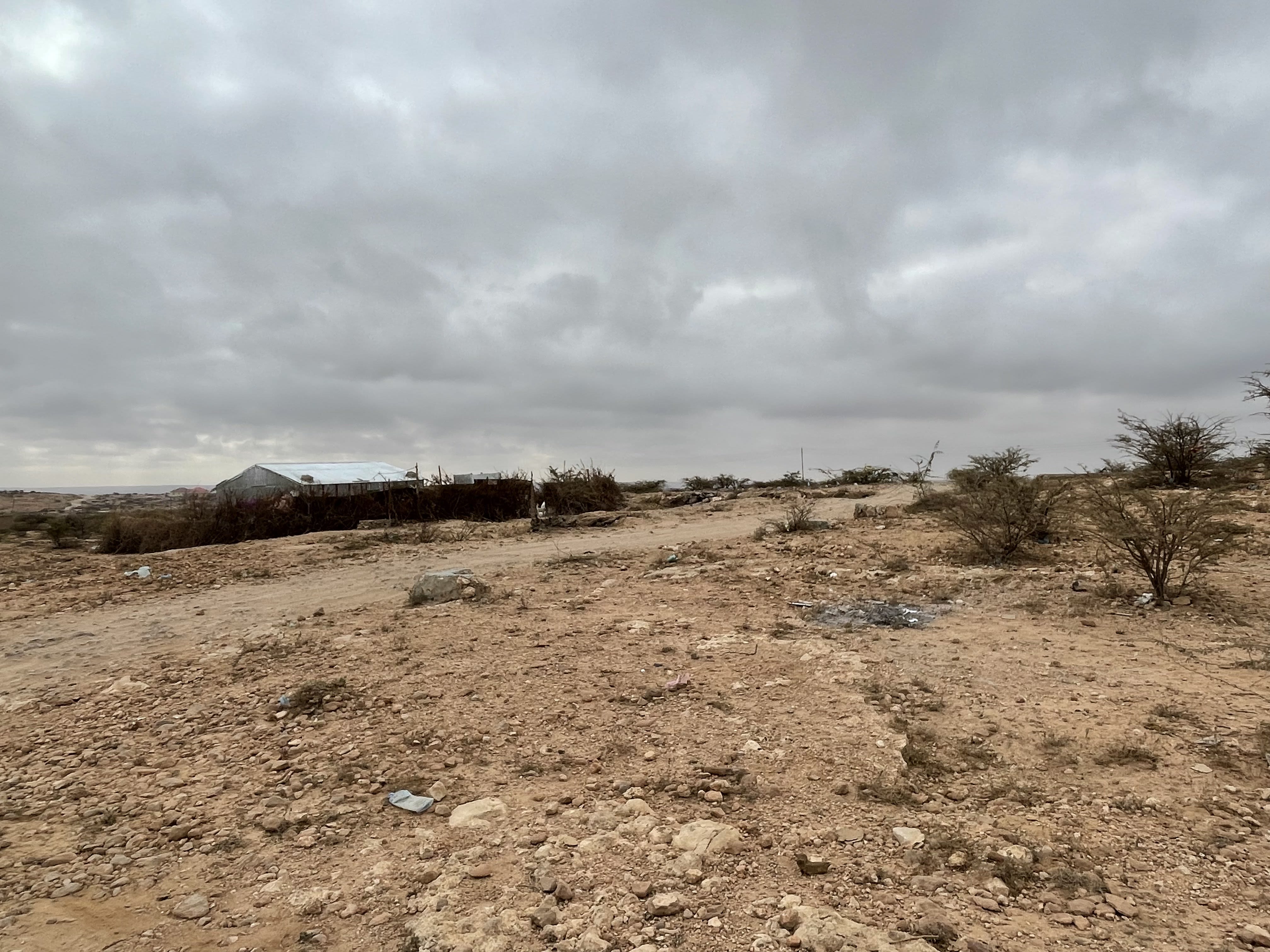


An internal displacement settlement area in Puntland.
An internal displacement settlement area in Puntland.

The outskirts of Hargeisa.
The outskirts of Hargeisa.

An internal displacement settlement area in Puntland.
An internal displacement settlement area in Puntland.
Putting a price on social protection
Pricing social protection cash transfers is also a delicate balance. The aid sector and governments have decided on $20 for these transfers. Given current levels of inflation, this doesn’t buy a lot. Shamis Hersi bought two cans of powdered milk with her monthly allotment, which she used to feed the three children she already has. Fatima Ibrahim Ahmed, a pregnant woman with three other children, used the cash to pay for her $15 monthly rent.

Many women use the cash transfers to purchase powdered milk for their other small children.
Many women use the cash transfers to purchase powdered milk for their other small children.
Humanitarian cash transfers tend to provide more money because it's intended to sustain families — but for shorter periods. But in this pilot, the consortium also provides shock-responsive cash to some of the participants, with funding from the EU’s humanitarian arm DG ECHO. If one of the enrolled participants lives in a drought-stricken area, for example, they receive an additional boost of cash.
“This is a way to buffer the impact of the shock, so all the gains made in the previous month are not lost,” Sangiorgi said.
This pilot aims to build the technical capacity within the governments to eventually take over the provision of cash transfers, including by raising domestic funds. But this could require more time.
"Social protection is a new initiative in our country,” said Jama Hassan Abdille, director general of the Puntland’s Ministry of Labour, Youth and Sports.
Because of this, the amount of cash that is provided should be kept low so the transfers can realistically fit into the governments’ budgets at some point, Concern’s Mohamed said, adding that the transfers should also be small enough to avoid creating dependency.
"It is clear, at this time, Somalia cannot give its people social welfare,” said Abdihakim Farah, social transfer adviser at Puntland’s Ministry of Labour, Youth and Sports. “We can start with a small amount of funding, targeting a very limited number in the first place, and then gradually increase the number and the amount injected into the social protection system.”
But, he added, “we cannot wait until we have a longer-term social protection system in place while drought and other emergencies are ravaging our people.”


Note: The Somali Cash Consortium facilitated travel for this reporting. Devex retains full editorial independence.
Photos by: Sara Jerving
Produced by: Janelle Cruz



